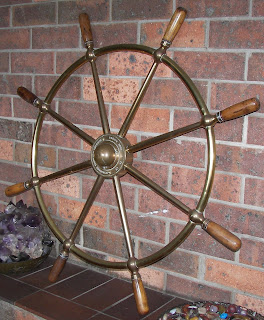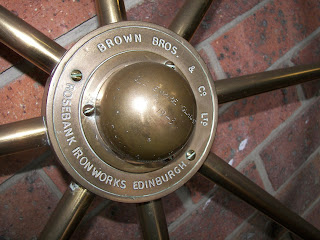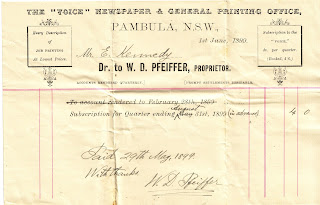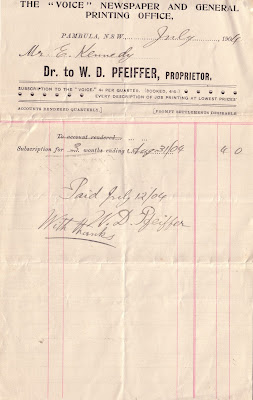Formerly used by Chinese market gardeners to carry baskets of produce around Pambula in the late 19th and early 20th centuries.
Chinese
immigration to Australia grew significantly with the Victorian and New South
Wales gold rushes of the 1850s and 1860s, many lured from the impoverished
areas of southern China by the potential wealth of the Australian goldfields.
Once
the 1860s Snowy Mountains rush at Kiandra waned, many luckless Chinese miners
returned to the coast, taking up residence in local towns including Pambula, as well as Merimbula, Wolumla and Bega. Described
as industrious and hard-working, they soon turned their attention towards
establishing market gardens.
Those who are known to have lived in Pambula
at various times included Willy, Wey Lee, Ah Kee, Ching Pong, Ah Tin Gut, Joe Ah Yup
and Lamby. In 1906, Pambula had four resident Chinese males, but no written or other accounts indicate that there were females amongst their number.

Their
gardens at Pambula were initially located on the corner of the Princes Highway
and Sandy Lane on the Flats. However, although that ground was rich and fertile,
it was also in the midst of a flood plain, and not surprisingly their crops and
huts were often affected by the almost annual inundations. When waters rose to
serious levels, the men were forced to seek refuge at the local courthouse, and
during the particularly severe 1919 floods, Joe Ah Yup’s garden was completely
destroyed.
Eventually
the group relocated to the site where the Colonial Motor Inn now stands. There they
grew an assortment of fruits and vegetables that they peddled from house to
house using small handcarts or baskets suspended from wooden yokes such as the one pictured here. A small timber house and a number of sheds stood
within the gardens, and it was there that most of the local Chinamen lived.
In 1927 when Joe Ah Yup decided to return to China, the Pambula Voice reported that "After
over 30 years a citizen of Pambula, Joe Ah Yup leaves for China on Saturday.
During his residence here, he has proved himself to be most law abiding, honest
and straightforward. His purse was always open to every charitable and sports
object and he never had to be asked for his annual subscription to the
hospital. Joe will be greatly missed by the children when he fails to do his
rounds on Saturday afternoons with his fruit baskets. A collection was
initiated prior to his departure, when he was presented with a set of pipes by
the townspeople as a small token of esteem and appreciation of his past
citizenship."
It was after Joe's departure that Lamby moved from Bega to
Pambula, taking up residence in a cottage at the rear of Baddeley’s tannery and opposite
the Chinese market gardens. According to former local resident Terry Dowling, he had a large
egg shaped growth on his neck and was an old man by the time he arrived in the town.
He also had a taste for echidnas, which he and his
fellow gardeners reportedly ate. Terry recalled "One and six they'd give you
for them. Puddin' Burgess and Jackie Newlyn and I walked those bushes and
bagged every poor old echidna up...Wouldn't matter if you took them fifty, they
had the money to buy them. They must have loved them...We took them live, they
didn't want them any way else, any other way bar alive, not damaged or
anything..."
Lamby was apparently the last of Pambula’s Chinamen. In
1934, he was sent to the Lidcombe State Hospital and Home for Men in Sydney where he is
likely to have died.
Little remains today as evidence of Pambula’s Chinese except this wooden yoke, a few stray plants growing wild on what was once their garden plot and a dwindling
number of residents with memories of their presence.
This yoke is in private ownership.
© Angela George. All rights reserved.
























